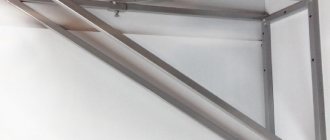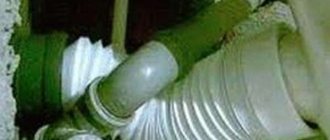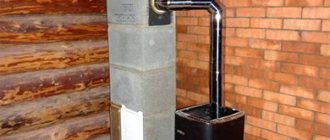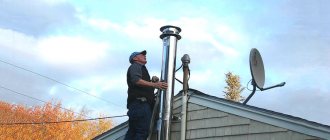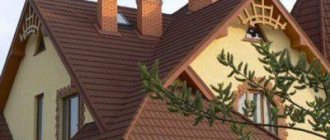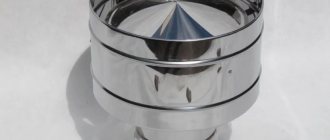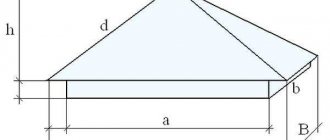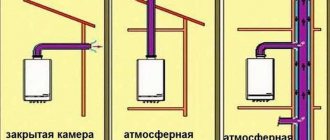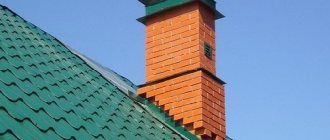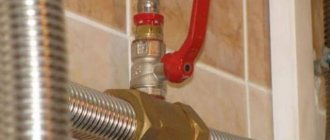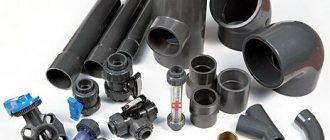The chimney is one of the most significant and important elements of boiler room equipment. The efficiency of the heating system, the nature of fuel combustion and the removal of combustion products largely depend on it. Modern chimneys are made from different materials. There are metal, ceramic, brick, and even glass pipes. For a chimney of complex configuration, it is best to use a metal corrugated duct.
Corrugated pipes can be used to construct new chimneys and modernize existing ones
Technical parameters of corrugated stainless steel pipes
Among the important technical indicators of corrugated stainless steel pipes are:
- operating temperature: -50 °C – +110 °C;
- pressure at an operating temperature of +110°C: 15 bar;
- possible bending radius of the product depending on the pipe diameter: 25-150 mm;
- thermal conductivity coefficient: 17 W/(m*K);
- linear expansion: 17;
- roughness coefficient: 0.008.
The corrugated pipe is resistant to pressure changes (limit value 50 atm). The maximum pressure for destruction is 210 atm. Other pipe indicators are given in the table.
Table 1
| Index | Meaning | |||||
| steel grade | 304 | |||||
| Diameter in mm | 12 | 15 | 18 | 20 | 25 | 32 |
| Outer diameter in cm | 1,62 | 1,81 | 2,0 | 2,56 | 3,2 | 3,76 |
| Inner diameter cm | 1,18 | 1,41 | 1,78 | 2,1 | 2,7 | 3,2 |
| Wall thickness in mm | 0,3 | |||||
| Weight of one l.m. corrugated pipes, kg | 0,13 | 0,156 | 0,164 | 0,2 | 0,23 | 0,28 |
| Corrugation pitch in cm | 0,425 | 0,476 | 0,5 | 0,5 | 0,526 | 0,56 |
Exhaust gas removal system for a gasoline generator or diesel generator for permanent, emergency, backup power supply of objects.
The generator exhaust gas outlet consists of the following parts:
Steel adapter
Connects the generator exhaust pipe and the exhaust pipe. To connect the adapter pipe to the exhaust pipe, use a tightening clamp. A union nut is used to connect to the outlet pipe.
Table 1. Working diameters of generator exhaust system adapters:
| № | Inlet diameter of the adapter (to the generator pipe), mm | Output diameter of adapter (for metal hose), mm |
| 1 | 22 | 32 |
| 2 | 22, 25, 28, 32, 38 | 40 |
| 3 | 40, 50 | 65 |
Flexible stainless steel hose
The exhaust gas outlet is equipped with a union nut and a high-temperature paronite gasket for connection to the generator via a steel adapter.
Table 2. Flexible hose diameter
| № | Nominal diameter, mm | Internal, mm | External, mm |
| 1 | 32 | 28.5 | 34.2 |
| 2 | 40 | 35 | 40.7 |
| 3 | 65 | 56.1 | 65.1 |
The length of the flexible hose can be manufactured in any size - from 1 meter (in increments of 0.5 m).
Tightening clamp
Carbon steel U-shaped clamps for crimping the adapter onto the generator exhaust pipe.
Mounting plate kit
Stainless steel mounting plates are used to surround and secure the flexible generator exhaust hose in the wall outlet.
Size - 200x200mm.
To secure the flexible hose in the mounting plate, 2 locking rings are used.
The outer surface of the flexible hose passing through the wall to the street must be wrapped with thermal insulating material, such as asbestos fabric or basalt wool.
The thickness of the thermal insulating material for the generator exhaust system must be determined by a specialist in accordance with the material of the wall into which the exhaust system is installed. For wooden walls, the recommended thickness of basalt wool (enveloping the pipe) should be at least 60 mm! The absence of thermal insulation material can lead to a fire, since the temperature of the exhaust gases can reach 700°C. Schematic diagram of connecting the exhaust pipe to the generator
Buy a pipe for generator exhaust gases and components wholesale and retail:
| № | Name | Price |
| 1 | Flexible stainless steel hose 32mm, from 1000 mm (any size) (complete with union nut and paronite gasket on one side. Without adapter) | 1034 rub/m |
| 2 | Flexible stainless steel hose 40mm, from 1000 mm (any size) (complete with union nut and paronite gasket on one side. Without adapter) | 1684 RUR/m |
| 3 | Flexible stainless steel hose 65mm, from 1000 mm (any size) (complete with union nut and paronite gasket on one side. Without adapter) | 3388 RUR/m |
| 4 | Steel adapter for pipe ud. 32mm (diameter 22mm) | 742 rub. |
| 5 | Steel adapter for pipe ud. 40mm (diameters 22, 25, 28,32,38 mm) | 742 rub. |
| 6 | Steel adapter for pipe ud. 65mm (diameters 40, 50 mm) | 1404 rub. |
| 7 | Steel clamp 32,38,42mm; 45mm, 55mm | 125; 140 rub. |
| 8 | Mounting kit for pipe 32, 40; 65 mm (2 plates, 2 locking rings) | 880 rub; 1182 rub. |
| 9 | High temperature sealant Used for sealing the connection of the adapter tip to the generator exhaust pipe and for repairing exhaust systems. Directions: Degrease the exhaust pipe, apply the required amount of sealant and install the tip. The sealant sets after 20 minutes of engine idling, without heating for 12 hours. (up to 1100°C) | 257 rub. |
| 10 | Thermal tape for the exhaust system, 1 m.p. Basalt thermal tape is used to seal exhaust system connections. Length upon request in multiples of metres. Basalt fiber has high resistance to elevated temperatures, at which the material can be operated without changing its technical properties. This material has high porosity, low heat capacity and excellent thermal insulation and electrical insulation properties. It has good resistance to oils, solvents, as well as alkalis and acids. (width - 50mm, thickness - 0.3mm, temperature - up to 800°C) | 65 rub. |
| 11 | Fire-resistant basalt fabric, 1 m.p. Used as a fire-resistant gasket under mounting plates to protect wooden surfaces and siding cladding. Length can be ordered in multiples of a meter. Basalt fabric has high heat resistance, is not subject to combustion, and high chemical resistance in acidic, slightly alkaline and cement environments. (width - 1m, thickness - 0.2mm, temperature - up to 800°C) | 195 rub. |
IMPORTANT!
- Goods will not be released without prior application!
- Payment by credit card without an order number is not accepted!
- Please use the guide below to select your exhaust system.
- Order completion time after payment is 24 hours
MANAGEMENT
ONLINE APPLICATION
PAYMENT BY CARD
Cost table for exhaust system kits by length
(pipe complete with union nut, clamp, paronite gasket on one side and adapter)
| Exhaust pipe length | Exhaust pipe diameter / price, rub. | ||
| 1 ¼ (32mm)(22mm adapter) | 1 ½ (40mm)(adapter 22, 25, 28, 32 or 38mm) | 2 ½ (65mm)(adapter 40 or 50mm) | |
| Exhaust pipe 1000 mm | 1901 | 2551 | 4932 |
| Exhaust pipe 1500 mm | 2231 | 3171 | 5992 |
| Exhaust pipe 2000 mm | 2561 | 3791 | 7062 |
| Exhaust pipe 2500 mm | 2891 | 4421 | 8132 |
| Exhaust pipe 3000 mm | 3221 | 5041 | 9192 |
| Exhaust pipe 3500 mm | 3551 | 5661 | 10262 |
| Exhaust pipe 4000 mm | 3881 | 6281 | 11332 |
| Exhaust pipe 4500 mm | 4211 | 6901 | 13402 |
| Exhaust pipe 5000 mm | 4541 | 7531 | 13472 |
* Mounting kit (plates), sealant, basalt tape and fabric are not included in the price of the kit
PRODUCT PURCHASE SCHEME:
Application
Check
Payment
Product
DELIVERY ACROSS RUSSIA!
As a rule, we Russian regions SDEK (also Business Lines, Russian Post).
For reference, the average cost of delivering a “metal hose” to the nearest SDEK terminal in the European part of Russia is 300 - 400 rubles. You can calculate the approximate cost of delivery using a calculator (bend up to 1.5m long - approximately 2kg, 50x50x10cm)
Delivery in Moscow (within the Moscow Ring Road) to the address - by courier 500 rubles. Pickup is possible (at the company address). to the Moscow region by transport company or courier (calculated separately)
GENERATOR EXHAUST SYSTEMS SALES DEPARTMENT:
+7(499)966-01-40
+7(906)737-29-34
The email address is protected from spambots. Javascript must be enabled in your browser to view the address.
Types of flexible pipes for smoke exhaust ducts
The modern market for corrugated pipes offers various types of these products. But not all of them meet safety requirements and can be used for a chimney. There are designs made of aluminum and stainless steel.
A safe chimney for a fireplace or stove can only be built from stainless pipes and components
Some time ago, aluminum pipes were used for the chimneys of water heaters and gas heating appliances. This multilayer corrugation is a pipe made of laminated foil with a diameter of 10-15 cm. It is durable and inexpensive. In order to give the required shape, a steel wire is inserted inside.
When compressed, the aluminum pipe has a length of 650 mm, and when stretched, it is up to 3 meters. You can use metal tape to extend the air duct.
Note! Boilers and fireplaces that burn solid fuel do not have an aluminum pipe installed, since it is not able to withstand high temperatures.
Currently, such corrugation is not recommended at all.
Stainless steel corrugated pipes are structurally similar to aluminum ones, but their characteristics are much better. The material can withstand temperatures up to 900 °C without damaging the duct structure and at the same time effectively remove combustion products from devices using liquid, solid and other types of fuel (boilers, fireplaces, stoves).
Types of corrugated pipes for chimneys
The market today is almost oversaturated with a variety of types of corrugated pipes. Of course, not all of them are suitable for installing chimneys - there are certain safety requirements that must be observed. Only stainless and aluminum corrugated pipes meet the stated requirements.
Until recently, only aluminum products were used when installing chimneys. Structurally, they were laminated foil laid in several layers - this is how a corrugated pipe for a chimney with a diameter of about 10-15 cm was formed. The structure could not maintain its original shape on its own, so steel wire was placed inside.
Such devices cannot be used in conjunction with solid fuel boilers - a chimney made of aluminum pipe cannot operate in conditions of direct contact with high temperatures. Currently, chimneys made from this material are not recommended for use.
Corrugated stainless steel chimney pipe is visually similar to aluminum, but that’s where the similarity ends. The main difference is the ability to withstand temperatures up to 900 degrees without damage or deterioration in the efficiency of removal of combustion products.
Construction of corrugated products
A corrugated stainless steel pipe for a chimney is made from multilayer foil. Its strips (0.12-1 mm thick) are connected using a special locking method and secured to a spring made of stainless steel. This design allows the pipe to be bent by 120-180° and stretched to a length exceeding the original by more than 3 times. The stretching/compression procedure can be repeated several times without compromising the integrity of the pipe.
Depending on the power of the boiler or furnace, a corrugated pipe of larger or smaller diameter is selected
For chimneys, corrugated stainless steel is produced in various diameters, which allows you to select the required size that matches the outlet pipe of the heating device.
In order to increase the service life of the chimney, it undergoes treatment with a special solution both from the inside and outside. This manipulation protects the channel material from chemically active substances and aggressive environments. The minimum service life of a metal corrugated chimney pipe is 20 years.
Installation of chimney corrugated ducts requires insulation. The insulation for such pipes is basalt wool, produced in rolls. It is suitable for both internal and external installation. The insulated corrugated stainless steel pipe does not heat up from the outside.
Installation of corrugated pipes
The corrugated chimney pipe is made of stainless steel in the form of multilayer foil. The individual strips are connected using the locking method and fixed using a spring, also made of stainless steel (read: “Which stainless steel chimney pipes are best to use - types and advantages”).
Such a device has a lot of advantages - for example, if necessary, the finished pipe can be bent at an angle of up to 180 degrees or stretched, increasing the length by more than three times relative to the original value. In this case, a very important factor is that such manipulations with the pipe do not affect its integrity at all (if you do not bend it too many times, of course).
Considering that quite a large number of corrugated pipes with different parameters are produced for chimneys, selecting the optimal option does not present any particular difficulties. In particular, this concerns the diameter of the structure - it is always possible to find a pipe of the appropriate size.
To achieve the highest possible durability and increase reliability, the corrugated steel chimney pipe is treated on all sides with a special solution, which increases resistance to most aggressive substances. The service life of a quality pipe is at least 20 years.
The only thing that needs to be done separately is to install the insulation of the corrugated pipe, which is necessary to prevent heating of the outer part of the chimney. Most often, rolled basalt wool is used for these purposes.
Main characteristics of corrugated pipes
Stainless steel corrugation for chimneys has a round cross-section. Its standard length in many cases makes it possible to obtain a smoke exhaust duct without unnecessary joints.
Note! The tightness of the chimney pipe directly depends on the number of joints that are used to assemble it: the fewer joints, the better.
Corrugated pipe is very flexible, it can be given any shape without special corners and bends
Stainless steel is the main material for the manufacture of corrugated chimneys. It is durable, has anti-corrosion properties and is heat-resistant, which increases the service life of products. During the heating of a boiler or furnace, condensate containing a certain amount of H2SO4 (sulfuric acid) forms inside the channel, which damages many chimneys made of other materials. Therefore, this type of pipe is used more often than others.
The stainless steel pipe design increases the mechanical strength of the entire channel by compensating (up to 50%) for the linear expansion of the initial pipe size when exposed to temperatures and vibrations.
An important thing when choosing the type of pipes for a chimney is the ability to take them into different shapes and configurations. The corrugation allows for repairs and installation in a channel that has a large number of bends. When purchasing a corrugated pipe, you need to check it for mechanical damage or kinks so that no problems arise during installation.
Pros and cons of corrugation
The corrugated pipe is suitable for any smoke exhaust systems, even at very high flue gas temperatures.
Another advantage of a corrugated pipe is the ease of connecting two sections together
It is resistant to:
- humidity;
- high temperatures;
- chemically aggressive environments.
This pipe is used not only for the chimney, but also in air conditioning and ventilation systems. Its flexibility allows you to easily install a chimney in the presence of complex architectural structures: sloped ceilings, floor beams, built-in columns, etc. This feature of stainless chimney corrugations reduces the cost and complexity of installation work.
Installation does not require expensive components (adapters, angles, elbows); this is important if the budget is limited. Among other advantages, we can note the possibility of connecting pipes of different diameters into one design. For this, special adapters are used.
Corrugated pipes have few disadvantages: short service life and the need for insulation to combat the formation of condensation. In addition, the draft in a corrugated pipe is much lower than in a smooth pipe, so it is not recommended to make a vertical channel along the entire length from such a product.
The diameter of the boiler pipe must match the size of the pipe being installed
Advantages and disadvantages
High-temperature corrugated stainless steel pipe has a lot of positive qualities:
- High resistance to various influences . Humidity, high temperatures or aggressive chemicals - all these factors cannot affect the performance of the pipe.
- Versatility . Flexibility and excellent performance characteristics make it possible to use corrugated pipe in a wide variety of situations. If necessary, a corrugated pipe chimney can be pulled through a fairly curved channel, and the system will work normally.
- Low cost of installation and material . Installation of corrugated pipes is quite simple and without additional costs, because you do not have to purchase any extra elements. If necessary, you can combine several pipes of different diameters using special adapters.
Speaking of disadvantages, we can only highlight a relatively short service life, especially in the absence of an insulating layer that prevents condensation. Also, a corrugated chimney pipe has weaker draft compared to a smooth-walled pipe.
Requirements for installing smoke exhaust ducts
When installing flexible chimneys, it is necessary to comply with some important requirements that will ensure reliable and efficient operation of the channel. Among them are:
- performing fastening using an adapter;
- correspondence of the diameter of the smoke exhaust duct to the cross-section of the outlet opening of a particular heating device;
- placing the corrugated pipe in a fireproof case when passing through the interfloor ceiling;
- ensuring double thickness of the walls of the outer protective casing in order to ensure the safety of the structure in case of possible damage to the outer layer;
- hermetically sealing the corrugated pipe to the heating system, preventing gas leaks;
- the length of the channel section from the bottom of the pipe to the horizontal section of the flexible chimney is not less than 50 cm;
- ensuring the radius of curvature of the installation of a corrugated pipe is not less than its diameter;
- the distance from the wall or ceiling to the connecting pipe is not less than 50 mm if they are made of non-combustible material;
- if the wall is made of another material, this distance must be at least 250 mm;
- providing a vertical connection to the boiler;
- the total length of the installed horizontal sections is no more than three meters;
- installation of a flexible chimney with a slope towards gas equipment of more than 0.01 degrees.
All materials used to secure the pipe and come into contact with it must be non-flammable
Installation of corrugated stainless steel pipes
The corrugated pipe is applicable for installing adapters that connect the outlet pipe of the device with the main chimney channel, repairing (lining) brick chimneys with bends. Both external and internal installation are possible for them.
The stainless corrugation for the chimney is secured with special metal brackets. They are either included with the pipe or sold as a separate holding element. Fixation is ensured by conventional clamps, which are tightened with an open-end wrench.
Note! When installing horizontal sections of corrugated pipes, it is necessary to prevent their sagging.
During installation, no more than three turns of the corrugated chimney are allowed. To join two pipes, metal tape is used, which ensures high tightness of the joint and prevents leakage of combustion products. During installation, the use of sealant to seal the joints of the chimney elements is not required.
A corrugated stainless steel pipe can be a good alternative to using rigid flue ducts, despite its shorter service life.
Installation of a chimney from a corrugated pipe
The installation location of the corrugated pipe is the area located between the outlet pipe of the heating device and the vertical chimney channel. In addition, this material is used in the repair of brick smoke exhaust ducts - in this case, the pipe can be installed both outside and inside.
The stainless steel corrugation is fastened with special metal brackets. As a rule, these elements are supplied complete with the pipe, but if necessary they can be purchased separately. Classic clamps are used for fixation.
When installing a chimney, the corrugated pipe should not have more than three turns, and there should be no sagging on the horizontal branches. The connection of individual parts of the pipes is carried out using metal tape - this way it is possible to achieve the maximum tightness of the system necessary to prevent combustion products from escaping into the room. Using tape makes it possible to do without sealant.
Conclusion
A corrugated chimney pipe is an excellent solution to the problem associated with the need to remove combustion products from a heating system. Before installation, you should study all the advantages and disadvantages of this design, so as not to encounter unpleasant surprises in the future, for example, due to incorrect installation technology.
